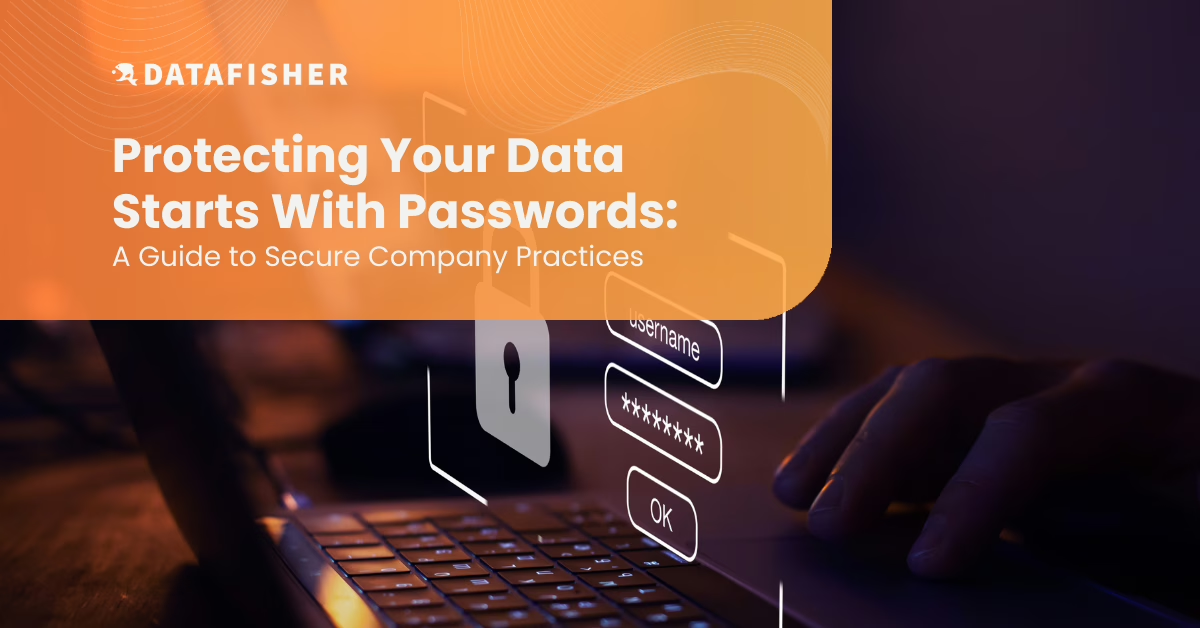In today’s digital age, data is the lifeblood of any organization. From customer information and financial records to intellectual property and internal communications, protecting this data is paramount. While firewalls and encryption play crucial roles, the first line of defense often lies with a seemingly simple tool: passwords.
The Power of Strong Passwords
Passwords act as gatekeepers, controlling access to sensitive information. Strong passwords are complex and difficult to crack, significantly reducing the risk of unauthorized access. Here’s why strong passwords are essential:
- They deter brute force attacks: Hackers often use automated programs that try millions of password combinations in rapid succession. Complex passwords make these attempts time-consuming and ineffective.
- They prevent dictionary attacks: Hackers may attempt to guess passwords using common words, names, and phrases. Strong passwords avoid these vulnerabilities by incorporating a mix of character types.
- They discourage social engineering: Phishing scams often trick employees into revealing passwords. Strong, unique passwords make this tactic less successful.
Crafting a Secure Password Policy
To leverage the power of passwords, companies need a robust password policy. Here are key elements to consider:
- Minimum Length: Implement a minimum password length, ideally 12 characters or more. Longer passwords provide more possible combinations, making them harder to guess.
- Character Diversity: Require passwords to include a combination of uppercase and lowercase letters, numbers, and symbols. This diversity creates a complex barrier for attackers.
- Password Complexity: Disallow common keyboard patterns, dictionary words, and personal information like birthdays or names. These are easily guessable and should be avoided.
- Regular Password Changes: Enforce mandatory password changes at regular intervals, such as every 90 days. This reduces the window of opportunity for attackers who might gain access to a compromised password.
- Password Managers: Encourage the use of password managers. These tools generate and store strong, unique passwords for different accounts, eliminating the need for employees to remember them all.
Beyond Passwords: Multi-Layered Security
While strong passwords are crucial, they shouldn’t be the sole defense. A layered security approach is essential. Here are additional measures to consider:
- Multi-Factor Authentication (MFA): Implement MFA, which requires a second factor beyond the password, such as a code sent to a phone or a fingerprint scan. This adds an extra layer of security, making unauthorized access significantly harder.
- Data Encryption: Encrypt sensitive data at rest and in transit. Encryption scrambles the information, making it unreadable even if intercepted.
- Access Controls: Implement role-based access controls (RBAC). This restricts access to data based on an employee’s job function, ensuring only authorized personnel can access sensitive information.
- Employee Training: Regularly educate employees on password hygiene and cybersecurity best practices. Train them to identify phishing attempts, avoid suspicious links and attachments, and report any suspicious activity.
Enforcing Password Policies
A strong password policy is only effective if it’s enforced consistently. Here’s how to ensure adherence:
- Automated Password Checks: Implement automated tools that check passwords against blacklists of compromised credentials and enforce complexity rules.
- Account Lockouts: Enforce account lockouts after a certain number of failed login attempts. This deters brute force attacks and encourages users to be cautious when entering passwords.
- Password Reset Procedures: Establish clear procedures for resetting forgotten passwords. This should involve secure methods, such as verification through MFA or registered email addresses.
- Disciplinary Action: Define consequences for violating password policies. This could include warnings, additional training, or even disciplinary action.
The Importance of User Education
Employees are a company’s first line of defense against cyber threats. Educating them about password security is crucial. Training should cover:
- Creating Strong Passwords: Teach employees how to create complex, unique passwords and avoid common pitfalls.
- Password Sharing: Emphasize the dangers of sharing passwords with anyone, even colleagues.
- Phishing Attacks: Train employees to identify phishing attempts and avoid clicking suspicious links or attachments.
- Reporting Security Incidents: Encourage employees to report any suspicious activity or potential security breaches immediately.
Conclusion
Passwords are the cornerstone of data security, but they are just one piece of the puzzle. Companies can significantly reduce the risk of data breaches and protect their valuable information by implementing a comprehensive password policy, layering additional security measures, and fostering a culture of cybersecurity awareness among employees. Remember, data security is an ongoing process, requiring constant vigilance and adaptation. By prioritizing password security and maintaining a robust security posture, companies can safeguard their data and build trust with their customers, partners, and stakeholders.
Request a 30-minute online meeting with a Datafisher specialist to learn more about best practices for data protection.
